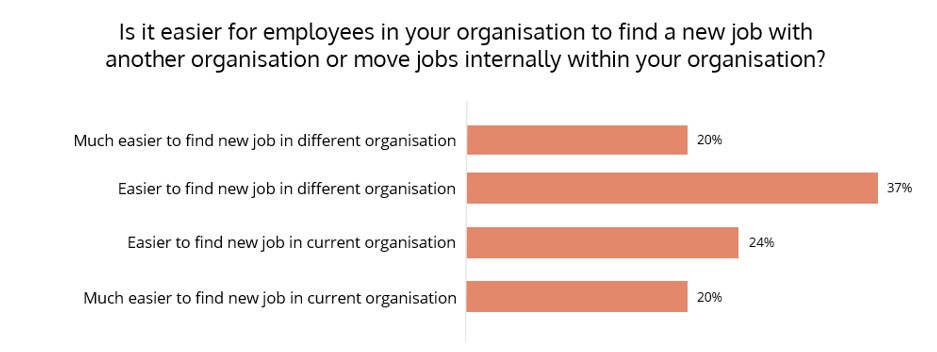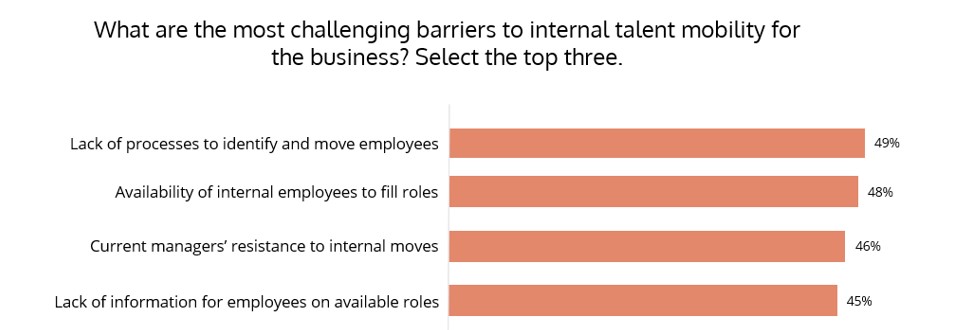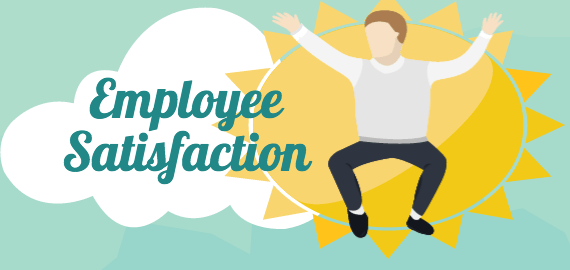Win the post-COVID-19 talent war by strengthening your internal talent mobility

As we enter a new financial year, businesses in Australia and New Zealand are continuing to navigate tight budgets due to COVID-19-induced economic damage. For many, a long-lasting freeze on external hiring has been imposed – and this is even more problematic considering many businesses have had to make redundancies. As a result of limited talent acquisition on the horizon, businesses are having to do more with less.
Luckily, a lot of high-potential talent lies right under our noses – the key is learning how to leverage it. This is when building an internal talent mobility strategy can offer a competitive advantage.
Responding to VUCA situations
An effective internal talent mobility strategy is needed when organisations are under pressure to re-evaluate their talent and redeploy them where there is demand. By leveraging existing talent, HR leaders can achieve smart team restructures and fill skill gaps to enable managers to meet their business objectives. This is critical when it comes to responding to VUCA (volatile, uncertain, complex and ambiguous) situations, such as COVID-19.
Strengthening internal talent mobility is also significant for increasing employee engagement. Today, high performers crave constant career development and clear career pathways – and if those pathways are with their current employer, all the better. Therefore, establishing an internal growth culture will ensure employees are continually moving forward, keeping them motivated and engaged in the process. Plus, investing in human capital will also enhance employer brand.
To find out how to strengthen your employer brand amidst the COVID-19 pandemic, read ELMO’s eBook.
The advantages of an internal growth culture
According to research by HR expert Josh Bersin,[1] organisations that have a strong “internal growth” culture breed stronger leadership. People who have grown with a company for many years and have moved between different roles and gained multiple perspectives, insights and skills, are the best positioned to lead others.
It makes sense, then, that an organisation’s highest-potential talent source is its own workforce. Yet, the problem, according to Bersin, is that while lateral career moves from one area in a department to another area in the same department isn’t complicated (e.g. an HR professional supporting a different function of HR – moving from a learning & development speciality role to an organisational design speciality role, perhaps), it’s much more difficult for an employee to reinvent themselves and move to an entirely new position within the same organisation (e.g. an HR professional moving into a sales role). Mangers and hiring managers may consider it “risky” due to lack of experience, especially if the company does not have technology-enabled learning & development processes to facilitate and manage employee retraining and reskilling.
Deloitte has examined this from the perspective of the employees. It found that it is generally easier and more attractive for employees to seek new opportunities in another organisation than to explore roles in their own organisation. According to Deloitte’s 2019 Global Human Capital Trends survey,[2] more than half (57%) of employees find it easier to find a job outside their organisation. See the results below.
Deloitte’s survey also viewed this from the employer perspective and uncovered the factors holding back internal mobility. See the graph below.[2]
The results indicate that the issue lies at the core of an organisation’s culture, and how it perceives internal mobility vs external talent. First must come a shift in mindset, and then a move to normalising and formalising processes.
Of course, due to today’s economic uncertainty, people are less likely to move between employers. This is a good opportunity for leaders to work on their internal talent mobility strategy to increase growth, employee engagement and business performance.
Agile internal mobility
Bersin identifies three models of internal mobility: Planned Mobility, Facilitated Mobility and Agile Mobility.1 He recognises the first as a traditional, “vertical” career management model where employees are only promoted when they’re “ready”. The second model, according to Bersin, is more dynamic and “ad-hoc” and often driven by politics (“it’s who you know”). Agile Mobility, on the other hand, is when people move around all the time, and typically work across multiple projects at one time.
In today’s rapidly-evolving landscape – a landscape that is VUCA due to COVID-19 – a vertical career model, such as the “Planned Mobility” type outlined above, though common, are not conducive to business processes. Agile internal mobility offers workers the opportunity to continuously develop their skills and expand their careers, which in turn encourages collaboration and innovation. What HR leaders should champion now more than ever is a real-time, flexible internal mobility model and growth culture.
4 tips to cultivate an “internal growth” culture:
- Conduct a talent “stock-take” or audit
The pandemic has caused many businesses to downsize or reconfigure roles in order to stay alive. In this case, a business should build a succession plan by conducting a talent ‘stocktake’ or audit and assessing how much its talent bench strength has been impacted. Then, it can revaluate team structure and address skill gaps to optimise talent and cost. It also means that HR leaders and managers get reacquainted with their employees – which is never a bad thing. Learning employees’ career aspirations and motivations helps to map out roles and develop a succession plan.
- Create a succession plan
Succession planning is an essential tool for future planning. However, 9 in 10 SMB owners have no succession plan in place – either for themselves of other key employees.[3] In this pandemic era, future preparedness is what all organisations must strive for.
A Gartner survey revealed that 81% of HR leaders cite lack of readiness as a top reason that high-potential candidates were unable to fill leadership positions.[4] Through succession planning, organisations will be able to identify a need for specific leaders in the future, whom they can then grow and expand in preparation.
Importantly, succession planning sends powerful messages to employees. It says that the company is still investing; the employer has faith in employees’ abilities; and they recognise the value that is being contributed.
- Step up professional development
Professional development is key to a successful “growth” business model. It is also a huge motivator for employees. According to one study, more than 9 in 10 (91%) Millennials want rapid career progression,[5] and 63% of employers report lack of career progression as the main reason employees leave.[6]
By investing in learning, employers can address skills shortages and future-proof their workforce. And it’s not only technical “hard” skills that need to be learned – soft skills are crucial for strengthening communication and interpersonal abilities, which is what’s needed to guide an organisation through a VUCA situation, like COVID-19.
Offering job rotations for high-potential workers is also a cost-effective way to develop talent and encourage internal mobility.
- Use technology to accelerate efforts
Technology can help to facilitate culture change. With technology-enabled platforms, HR can have a helicopter view of the organisation’s talent – their skills and their aspirations. Then, they can identify skills gaps and map out succession plans to achieve future preparedness and bolster employee engagement. ELMO Succession Management, for example, can also help managers identify potential flight risks and evaluate the broader risks of leaving roles vacant. Just as critically, ELMO Succession Management empowers employees to identify their own career interests and preferences, which they can then use to plot desired career paths, and the steps to get there via personalised development plans.
Creating a culture of internal mobility is more than restructuring a team to tackle a VUCA situation. It’s about changing the way career progression is perceived and managed; about how people are rewarded and recognised, and remunerated; and the investment into professional learning & development. COVID-19 has given business leaders the push to uncover talent that is right under their noses – and there will be plenty of it.
ELMO Cloud HR & Payroll’s end-to-end solutions streamline the entire employee lifecycle, from hire to retire. ELMO addresses all key employee-employer touchpoints, including recruitment, onboarding, performance management, payroll, rostering / time & attendance, learning & development, and more, allowing leaders to better manage workers and continually develop strategic solutions to enhance business performance.
ELMO’s Succession Management solution is designed to help business leaders and HR professionals develop and manage talent pipelines effectively, helping to boost both employee and business productivity. To find out more, contact us.
[1] “Talent marketplace platforms explode into view”, Josh Bersin, July 2020
[2] Talent Mobility: Winning the war on the home front, Deloitte, 2019
[3] ELMO HR Industry Benchmark Report, 2019
[4] 5 Succession risks that threaten your leadership strategy, Gartner, 2020
[5] “Attracting and Retaining Millennial Professionals”, Robert Walters report
[6] “Turnover and Retention Research Report”, Australian HR Institute, 2018
 HR Core
HR Core 











